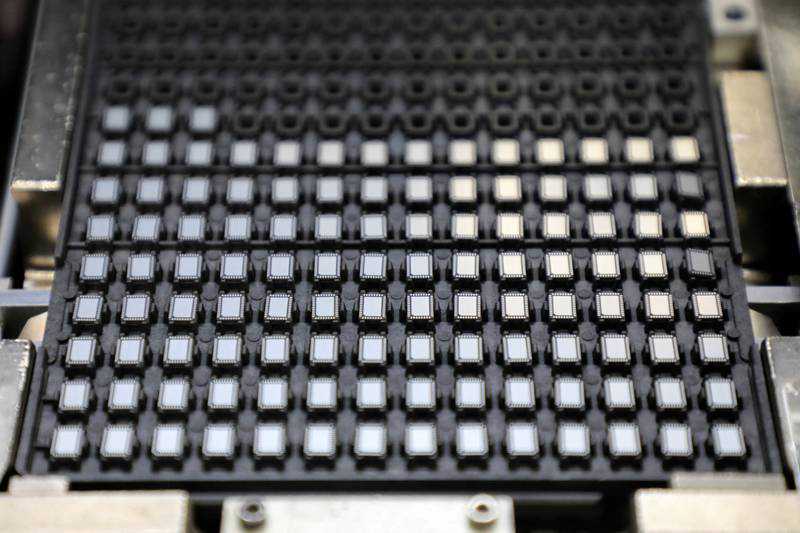Semiconductor sales could hit $600bn in 2022 on strong demand
04 January, 2022

The global semiconductor industry, which was beset by supply challenges in 2021 owing to the Covid-19 pandemic, is poised for a big rebound this year, with sales pegged to cross $600 billion for the first time.
The boom in sales will be driven by "unusually strong" demand for consumer electronics, according to a new study from Euler Hermes, a subsidiary of German financial services company Allianz.
Worldwide chip sales surged 26 per cent to hit an all-time high of $553 billion in 2021, making the wider electronic component industry one of the winners from the pandemic, Euler Hermes added.
The industry is expected to grow 9 per cent in 2022, leading it to surpass the $600bn mark, Euler Hermes predicts.
"The current semiconductor cycle has been firing on all cylinders since the industry emerged from its worst recession in 2019 [minus 12 per cent]. Volumes have been driven by unusually strong demand for consumer electronics, prices have increased because of a tight supply/demand equilibrium and the product mix has improved with the introduction of higher-priced, new-generation chips using the 5nm manufacturing node," the credit insurance company said.
Personal computers, smartphones, and audio and video equipment accounted for 80 per cent of final semiconductor sales and were the three main factors driving the industry's growth.
The surge in sales for electronic devices during the pandemic created a bigger-than-anticipated demand for semiconductors, leading to a shortage in the industry. The US-China trade spat is also a factor, since many companies from both sides do business with each other. Huawei, for example, is unable to supply semiconductors to its US counterparts, having been blacklisted by Washington.
And as the making of chips is a complex process that takes months, manufacturing cannot be increased on short notice.
Global chips are expected to remain in short supply in the coming months, but are expected to return to normal levels by the second quarter of 2022, according to industry analysts.
The auto industry was among the hardest hit. Research firm Gartner last month said the global semiconductor shortage will drive nearly 50 per cent of the top 10 carmakers to design and produce their own chips by 2025.
It added that supply chain disruptions, chip scarcity, the electrification of vehicles and autonomous trends will compel automotive original equipment manufacturers to reduce their reliance on traditional chip makers, giving car makers more control over their product road map and supply chains.
Entering 2021, officials at automotive bellwethers Volkswagen, Ford, Fiat Chrysler, Toyota and Nissan all said they have been hit by the shortage and have been forced to delay production of some models in order to keep other factories running.
On the other hand, Tesla, the world's biggest electric vehicle maker, managed to work around the crisis by using new chip designs and rewriting the software it uses on its vehicles, its chief executive Elon Musk said.
The ongoing chip shortage is expected to help chipmakers such as Intel, Qualcomm and GlobalFoundries among others. GlobalFoundries capitalised on the market conditions and listed on New York's Nasdaq in October to raise $2.6bn.
The world's third-largest semiconductor manufacturer, owned by Abu Dhabi's Mubadala Investment Company, is poised to grow significantly in the coming years, in line with emerging industries and as demand for chips is expected to soar, Mubadala chief executive and managing director Khaldoon Al Mubarak told The National at the time, stressing its strategy to shift investments towards industries of the future.
Intel, the world's largest semiconductor maker by revenue, last month said it will increase capacity by adding facilities in France and Italy, plus a major production site in Germany, Bloomberg News reported.
However, Euler Hermes said that it expects all three factors to cool down as final demand growth normalises and new capacities come online.
"Further ahead, the industry will enter 2023 in the fourth year of its current growth cycle and is likely to experience a plateau in sales. History shows a semiconductor cycle lasts four to five years and is followed by a period of adjustment lasting 12 months on average," it added.
Growing political support for a greater independence from imports from Asia in Japan, North America and Europe has also been noted in recent months. Because they were given a comparatively low priority in the order book of Asian manufacturers, their local automotive and machinery industries were hit hard by acute shortages, causing factories to close and translating into billions in lost revenues.
In September, US and EU trade and competition officials launched a new forum joining forces to boost semiconductor supplies.
"While we do not anticipate such moves to challenge Asia’s domination in semiconductor manufacturing in the short term, they will most likely contribute to more balanced trade flows in a more distant future," Euler Hermes said.
Source: www.thenationalnews.com
TAG(s):
